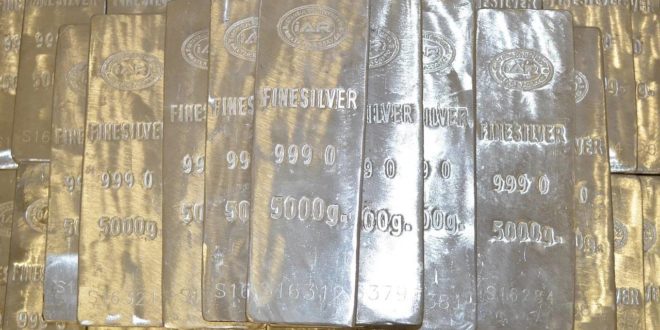Investing in silver is a common practice all over the world. No matter where you are, almost everyone has heard about the benefits of investing in gold but what about silver? It may not be as popular as gold but is it worth investing in? Let’s find out.
It is quite natural for someone to be cautious about any potential investments. Every form of investment comes with a certain amount of risk. Everything comes with both advantages and disadvantages and silver is no different. However, certain assets are more susceptible to risks and others are safer. Some come with high risk but high reward while others come with low risk but low rewards as well.
Silver: A Precious Metal and Energy Conductor
Silver is a soft, lustrous, metallic-white precious metal (chemical symbol Ag) with some surprising characteristics. Besides being extremely malleable (able to be hammered into a thin sheet) and ductile (able to be stretched thinly), silver is an excellent conductor of electrical energy. In fact, silver outranks copper in terms of its conductivity — owing to its atomic composition — and is used even today in some electrical switches and connectors.
In addition to this, silver is highly valued and has been historically used in coins, mirrors, tableware, medicine, and jewelry. It is mined all over the world, although native (i.e. natural) silver is relatively rare. Produced silver today is often a byproduct of refining other metals like gold, copper, zinc, and lead. The following describes silver and its properties:
General Description
The chemical symbol of silver is Ag. Its atomic number is 47, and it is a transition metal (an element whose particular “d-shell” of electrons is only partially filled). Silver has a standard atomic mass of 107.8682(u) and weight of 107.8682 g. mol-1. It has two stable, naturally-occurring isotopes — 107 Ag and 109 Ag — the former being more common.
Physical Description
Silver has a room-temperature density of 10.49 grams per cubic centimeter. When liquefied, silver has a density of 9.32 grams per cubic centimeter. Its melting point is 961.78 degrees Celsius, and its boiling point is 2162 degrees Celsius. Silver vaporizes at 254 kilojoules per mole (kJ/mol).
Atomic Description
Silver has three oxidation states: +1, +2, and +3 — with +1 the most frequently found, making the metal rather stable. It has a Pauling scale electro-negativity of 1.93 units. Its atomic radius is 144 pm, its covalent radius is ~145 pm, and its Van der Waals radius is 172 pm. Its first ionization energy is 730.8 kJ/mol, its second is 2072.93 kJ/mol, and its third is 3358 kJ/mol.
Silver in Society
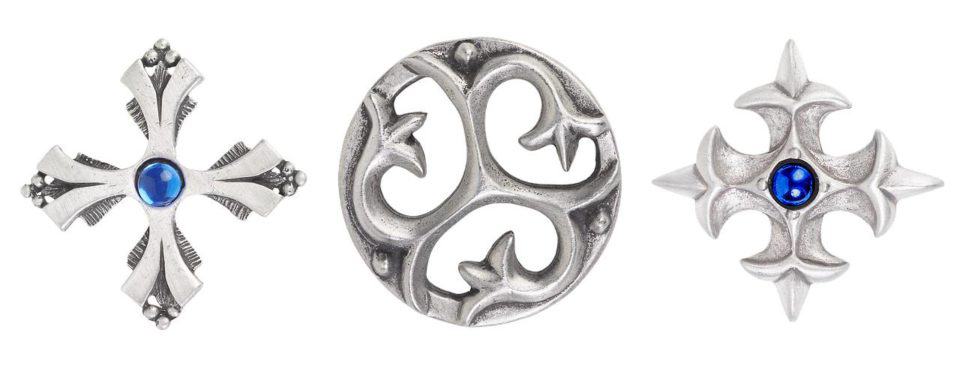
Silver has been used for coins, mirrors, electronics, jewelry, tableware, dental equipment, textiles, and medicine. It has been most prominent as a precious metal, and used for trade at least since ancient Greece (600 BCE). A description of silver as a form of currency follows.
Silver Standard
The silver standard is a type of monetary system. In this system, the standard monetary counting unit is based on the value of a fixed weight of silver. This standard was used in Europe roughly from the mid-15th century to the mid-19th century. During this time, the gold/silver ratio (the amount of silver needed to purchase one ounce of gold) was about 15.1 to 1.
Over the years, as European governments stopped minting silver coins, adopted the gold standard, and eventually restricted gold/silver ratio values, the gold/silver ratio raised to around 80 to 1, on average. Though the ratio fluctuates today, it is no longer nearly as high as before the 19th century.
Silver Exchange
One particular type of silver standard is the silver exchange, involving companies whose products (exchange-traded notes, exchange-traded funds, and closed-end funds) are based on the price of silver. Some of these products are backed by physical silver assets, others are not. As the price of silver can fluctuate greatly (especially in its relation to gold), silver exchange products can be subject to likewise volatility.
Silver Bullion
A second type of silver standard, silver bullion is a highly-refined, pure version of the metal that has been processed into bars, ingots, or special coins. These items are typically not circulated; they are usually produced or purchased to hedge against the devaluation of other forms of currency. As late as the 1960s, United States-issued silver certificates could be redeemed for actual silver bullion or coins, but this practice has since been abandoned.
Silver Specie
Another type of silver standard, the silver specie, is that of silver coins that various governments have minted and circulated. The most prominent silver specie in Europe was the Joachimstaler or Thaler, a large silver coin produced during the Holy Roman and Hapsburg Empires, up until the mid-19th century. This 40-millimeter, roughly 30-gram coin served as the predecessor for many silver species in Europe, and the United States’ own silver dollar. The word “dollar” actually derives from the name of this silver coin.
Investing in Silver
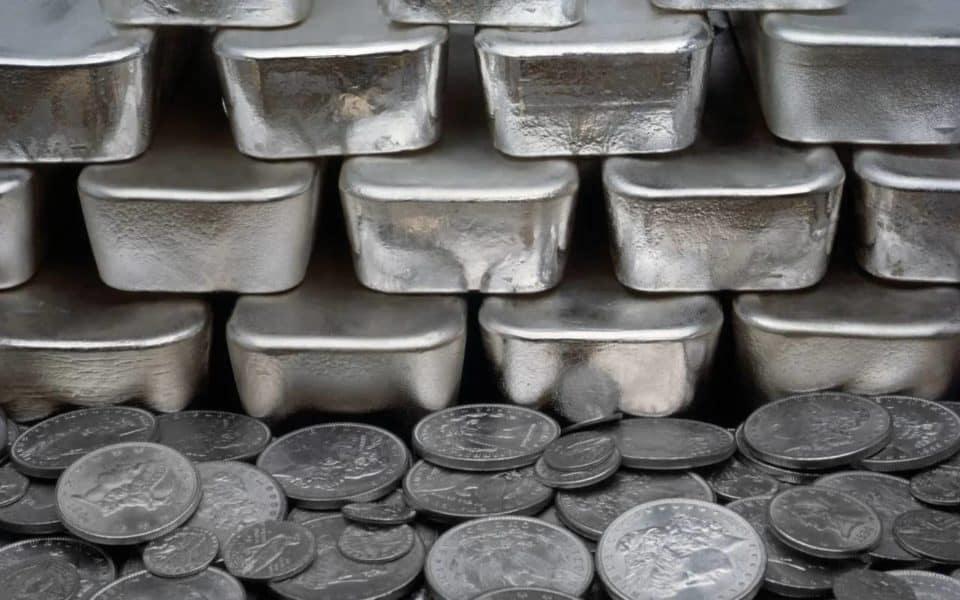
There is always talk of gold as the best investment in precious metals. However, investing in silver has also become an interesting opportunity. Especially in terms of portfolio diversification, any form of investment in silver shows long-run benefits. But, how does it work? Let’s see the difference between silver coins and silver bars. Then again, what about the digital form of investments like silver accounts and CFD? We will look at these questions and other meaningful points.
Is Investing in Silver Worthwhile?
Historically, the financial crisis and the uncertain future on the markets push investors towards the purchase of safe-haven assets. Certainly, one of these assets is silver, one of the first precious metals (together with gold and bronze) to be used as a valuable asset. No wonder it continues to attract attention today.
The price of silver is established by trading on the stock exchange. Thus, it can greatly vary from hour to hour. The real-time value fluctuates based on industry demand, the amount of physical investment silver purchased, and financial investments on the precious metal. In other words, there is plenty of good reasons to invest in silver for a great profit.
Investing in silver is a safe investment. In fact, existing and new technologies influence silver prices directly and indirectly too. Think of any PC and modern electronics. Many of these new silver-based techs take advantage of the physical properties found only in this metal. In essence, it is an irreplaceable material. New technologies, requiring the use of silver, lead to an increase in demand. Therefore, its price steadily increases over time.
Is Silver Investing Safer Than Gold?
Generally speaking, you can consider silver as a hedging instrument against inflation. Silver, and gold as well, are a safe investment. This means that silver can retain its value and purchasing power better than paper currencies and other assets in the event of economic uncertainty. When and if these economic concerns turn into complete crises, there is generally significant upward pressure on prices for silver and other precious metals.
The first question that almost everyone thinks sounds like this one: why would I buy silver and not invest in gold? Indeed, many hold silver as the main alternative to the yellow metal. They think it is very precious but with a lower value. But, there is no thought about this ranking. In brief, it is more of a psychological association, like the gold and silver medals.
However, those who consider purchasing physical silver, such as silver bars or investing in silver coins, are often afraid of purchasing a lower-class precious metal. Without a doubt, gold has a much higher price. But in no way, this fact affects the value of silver. To put it differently, sometimes a lower price is desirable for some form of long investment.
As a rule of thumb, investing in silver may or may not be safer than gold by means of some technical trifles. A good deal concerning silver is always a safe deal.
Why silver is extremely profitable?
Many investors consider it more reasonable to invest today in silver recovery rather than gold at historic highs. The purchase of silver bars is much more affordable than a gold bar. At this moment, any form of investment in silver represents a good opportunity for a long-term investment.
Another very interesting aspect concerns the various industrial uses of silver. As already mentioned, the material is required not only for valuables but also in more numerous sectors of the electronics industry than gold. Thus, the price of silver follows the upward trend of the economy.
Silver’s strong point is its application in several industrial fields ranging from scientific to commercial ones. It is the perfect compromise between gold (with a very high intrinsic value) and industrial commodities, such as copper or palladium. If you think that mobile phones and electronics will continue to sell, then you can imagine why it has so much potential.
Finally, by investing in silver, you avoid your currency becoming devalued by converting it into an asset. As a result, your investment could grow in value over time as the price of silver rises.
How To Invest in Silver?
Buying physical silver is the most common method of investing in the growth of precious metal value (not the only one). Once, silver was contained within the coins, while today these means of exchange are no longer on the market. You can currently buy silver by choosing from:
- jewelry, silverware or collectibles
- ancient silver coins
- silver bars
Regardless, physical silver is not the only method of investing in silver. You can opt for a silver account, a silver certificate, Silver ETFs (very similar to a GETF), or a CFD. In brief, they are electronic ways to invest in silver. At the same time, it is much less complex than purchasing physical silver. Hence, many choose not to own silver bars or coins, but to trade on the stock exchange listing of silver.
Why you should lean toward one method or another is up to you. For one thing, some people do not want to deal with the actual storage of precious metals or jewelry. Instead, other people may not trust some financial institutions and consider the physical metal to be safer. Let’s see each of these methods so you can find the one that is more suitable for you.
Buying silver coins
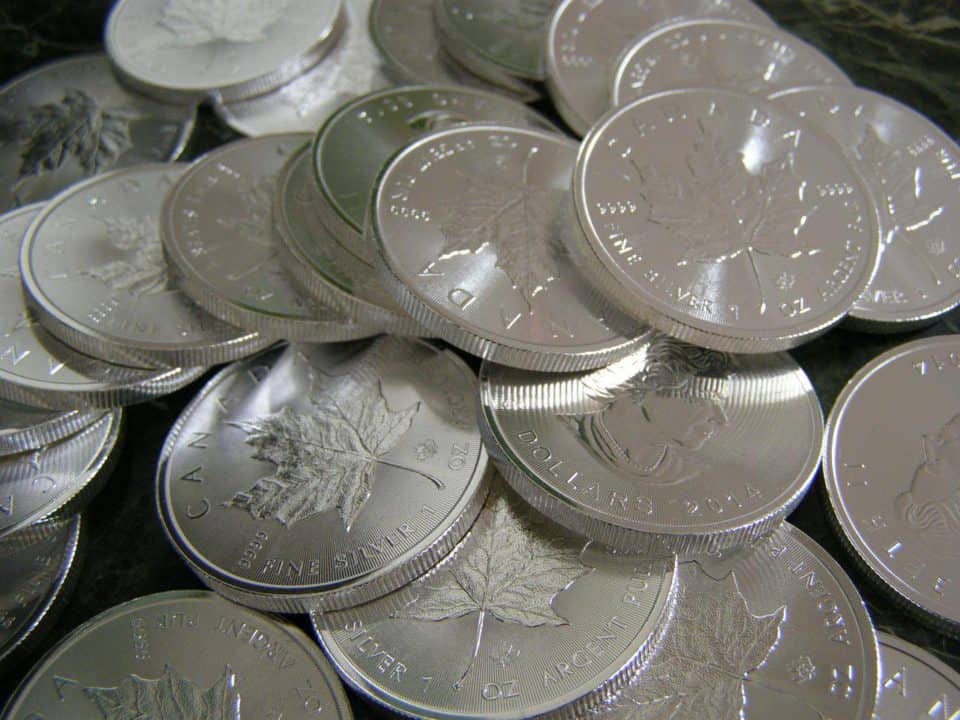
With a wide choice of silver coins available to choose from, it is easy to opt for this method. Indeed, it is a convenient investment with high flexibility. Commonly, brand new, pure silver coins allow for quick deals directly from the most renowned mints in the world. Also, buying silver coins of size 1 ounce is ideal for any investor seeking flexible investments.
As an investment, silver coins include the popular Britannia, the Canadian Maple Leaf, and the Austrian Vienna Philharmonic. You can find them at affordable and competitive prices. By buying more coins, you can usually access discounts on the selected quantities, therefore the greater the quantity purchased the lower the price per coin. Thus, the convenience will be greater in most well-thought purchases.
Investing in silver bullion bars
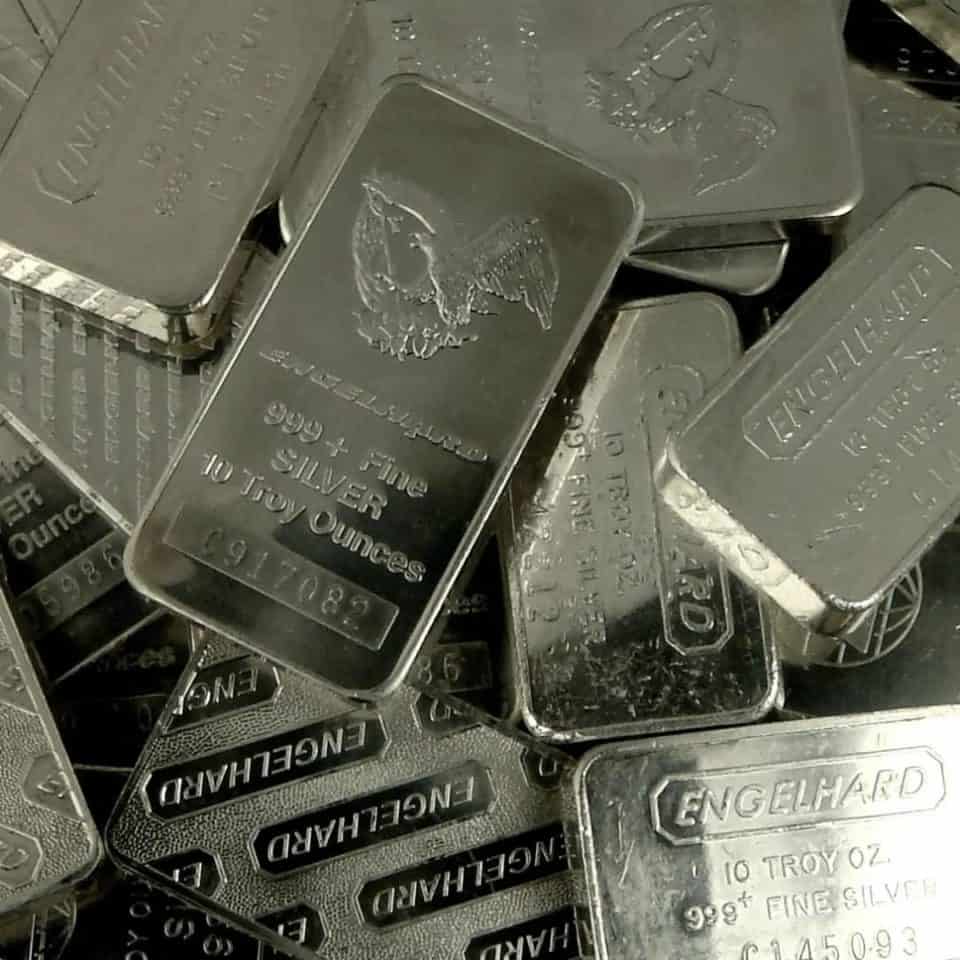
It is better to purchase silver bars only from authorized companies like the London Bullion Market Association (LBMA) manufacturers or distributors such as Metalor or Umicore, in addition to other reputable brands. Besides, pure silver bars guarantee an easier sale at bullion dealers.
Buying silver bars is simple anywhere in the world. Plus, the wide choice of products will surely satisfy any investor’s needs. Among the most popular types of silver bars, there are the 100-gram bars for remarkable flexible investments. Alternatively, the standard 5-kilogram silver bars represent the best bang for your bucks. Anyway, for anyone looking for something in between, 500-gram sizes are also very popular these days. On the other hand, for those who are looking for flexibility and convenience at par, the 1 kg bar is probably the best choice.
Managing a silver account
In Europe, Swiss banks can let you open a silver account. Within it, you would trade silver as you would with any foreign currency. Special terms and conditions may apply in any bank that allows this service. For instance, a silver account could not require a physical deposit. In this case, the amount of silver in your account would only reflect a portion of the amount of silver that the bank owns. As investors trade electronically, a PC or tablet is necessary to trade with your silver account.
Storing a silver certificate
An allocated or non allocated silver certificate would let you invest in silver by purchasing a document instead of the physical metal. While some banks may still issue a silver certificate, in the USA, the House of Representatives retired this form of investment in 1963. This implies that when you buy a silver certificate you might lose your investment. For example, if the issuer of the silver certificate fails, you will not be able to recover all your investments. Thus, it is better to deal with silver certificates in areas where they are still popular and accepted.
Silver exchange-traded funds
Silver and ETFs are a combination that holds a very interesting financial perspective. Notably, the most recent data suggest that the demand for silver is increasing while the supply is falling. As you may think, this circumstance should be a good omen. Whenever the supply decreases, the prices go up.
Investors who subscribe to Silver ETFs earn profits based on movements in the silver price (determined by the London Silver Fix) net of the fund’s expenses. Just like with a GETF, a Silver ETF lets you invest in silver as you would with stocks without having to store and secure the physical silver bars or coins.
Investing in silver via CDF
A CFD is the best way we have to invest in silver. They are contracts-for-difference that allow us to invest in the margin and only cover price changes. On the positive side, you can begin investing with a very small financial capital. Therefore, a CDF makes it easier to grow our financial capital.
To clarify, the investor bets on the rise or the fall of the price of silver. If you start using an online trading platform, you will be able to buy a Silver CDF and bet almost right away. If you correctly guess the direction of the silver price, you will gain a good or huge profit. If you don’t, you will lose your money.
Why Should You Invest in Silver Coins, Bars and Bullions?
Silver coins, silver bars and silver bullions are a comparatively smaller market, especially when compared to gold. But don’t let that fool you. There are plenty of reasons why investing in silver might end up being very profitable for you. Here are some of them:
- Real Money Value – Similar to gold, silver is a form of currency because unlike digital assets, it’s tangible. Physical silver is a hard asset that will always have value. Its price may go up or down but it will never go down to zero. You don’t have to worry about getting hacked and having your investments erased from history.
- Great Benefits – While investing in stocks or bonds, there is a need for a third party when it comes to contracts or promises. With silver, there is no such requirement as it comes with zero counterparty risk. It also has a stellar reputation as an asset since it has been used throughout history as a form of currency in one way or the other. You also don’t get any default risk when it comes to silver.
- Affordability – Compared to gold, silver is far more affordable and therefore makes it more accessible for everyone. But at the same time, it still holds enough value to financially sustain you through any crisis that may occur. This also makes it an excellent gift to give to someone because its value has the potential to be worth more in the long run.
- Practicality – Its affordable price also makes it more practical to use for smaller purchases. Doing the same with gold can be quite difficult given its high value. Therefore, it’s easier for you to sell the right amount at any point of time.
- Performance in Bull Markets – As it is a relatively small market, even a little bit of money moving in or out can have a more drastic change in price than other assets. In bear markets, gold may come on top but in bull markets, silver performs far better than gold.
- Rarity – With each passing day, the worldwide inventories (government and other institutions) of silver are slowly getting depleted which means that the value is set to increase in the future. This is especially true in the case of government inventories as silver is no longer used to create coins.
What Are Some of The Most Popular Forms of Investments When it Comes to Silver Coins?
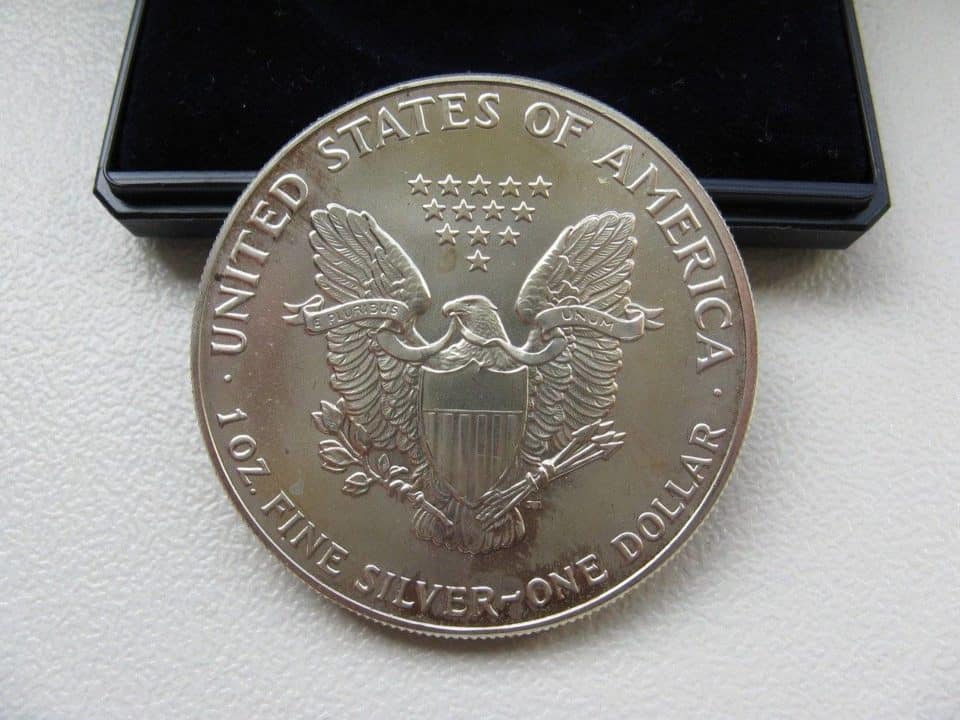
- American Silver Eagles – The American Silver Eagles are considered to be one of the best-selling investments when it comes to silver. They are accepted all over the world and there would be plenty of interested buyers if you ever wish to sell some. They do require you to put up a high premium upfront when buying but its value is good enough to allow you to recoup all your costs and more over time.
- Canadian Maple Leaf – After the American Silver Eagles, the Canadian Maple Leaf is considered to be the next high-value form of silver investment. The design aspects in particular are astonishing given its intricate lines and precise workmanship.
- Austrian Philharmonic – This is one of the most well-known silver bullion coins in Europe and has great potential when it comes to investments. As the name suggests, the design is focused on the Philharmonic Orchestra and features the Great Pipe Organ on one side and various instruments on the other side.
- British Britannia – Although the Austrian Philharmonic silver coin is very popular in Europe, the British Britannia is one of the most popular silver coins in the U.K. Although it was first produced in 1997, it got upgraded to pure silver only in 2013.
There are plenty of other popular silver coins that are traded all over the world such as the Australian Kangaroo, Mexican Libertad and the South African Krugerrand but not at the same level as the top four silver coins.
Are Silver Bars Good For Investment Purposes?
The biggest benefit of investing in silver bars is that they come with relatively lower premiums than coins. This is because they don’t have the same amount of intricate craftsmanship as coins and are easier and more affordable to manufacture. Liquidity won’t be as good due to its size but if you are planning to invest and hold them for a long time, they can be a great form of investment. It is however very important that you look for the manufacturer’s stamp on it as every reputable one will have it.
Final Thoughts
Silver comes in a variety of different forms when it comes to investment and each one comes with both advantages and disadvantages. Silver coins offer better liquidity value but are more expensive whereas silver bars are affordable but offer less liquidity. This allows different types of investors to partake in the investment of their choice based on their short and long term goals.
With its increased use in industry, declining volume in government inventories, great accessibility, real money value and affordable price point, silver is an excellent choice of investment for the everyday man or woman. It has played a prominent role for thousands of years in our collective history and will continue to hold value for the foreseeable future making it one of the safest and most affordable forms of investments today.
 Raahe Guide Raahen Esittely
Raahe Guide Raahen Esittely
